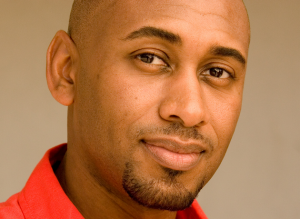Yes, there were the proverbial and heavy role models such as Toni Morrison, Maya Angelou, Richard Wright, and James Baldwin, all of whom were part of my high school English class repertoire. And as well liked, revered, and respected as these legends were for their writing style and subject matter, I always longed for something a little more accessible. Something that spoke to the experiences I saw among my peers and neighbors. Middle class. Post civil rights era. Smart. Not in trouble. With a little more access and privilege than the generation before us. The kind of black and brown folks the media didn’t/don’t often highlight on the six o’clock news.
[pullquote style=”right” quote=”dark”]On writing: I’ve always wanted to write novels. But I never felt like I had any role models to look toward who’d say, “Yes. You. Frederick Smith. Black kid. Detroit. You can write and publish a novel.[/pullquote]Then along came Terry McMillan, J. California Cooper, Eric Jerome Dickey, and E. Lynn Harris. When I discovered their work, I knew that one day I could write a novel that might one day be published. I didn’t know the route to take, nor did I major in English or Creative Writing – I did Journalism at the Missouri School of Journalism – but I knew that one day I’d write stories about the experiences of people like me. I always have credited Terry McMillan and E. Lynn Harris (though I’ve never met them) for giving me hope that I could realize my dreams.
Fast forward. After a short stint in television news, finishing a grad school program in Higher Education and Student Affairs in Chicago, and working a numerous colleges and universities as a Student Affairs administrator, I decided to get serious about my writing. I enrolled in a fiction writing class at the UCLA Extension Writers Program.
I wrote about women, immigrants, people of color, poor people, gay people, working class people… the kind of people my classmates, who were mainly white and from the west side of L.A., didn’t hang around or notice on a day-to-day basis.
But my teacher, Kerry Madden, noticed something in my writing and stories. And with one class assignment, about a group of black and Latino gay guys in L.A., she was particularly struck with the voice of each of the characters. Somehow, I’d created a distinct voice and vernacular for each guy in the group of friends, and Kerry asked for more. Each week, she challenged me with a new set of “What if?” questions that pushed me to write more. Eventually, I saw what was the beginning of a novel taking shape.
After a year of writing, and a year of revising with a couple writers’ groups, I started shopping for an agent. Everything I did, I learned on my own in terms of writing query letters, how to create a tag line to describe the novel, and in formatting a manuscript. It wasn’t easy, but besides my teacher Kerry, who had her own novels to write and complete, I had no other resources. All I had was my drive to find an agent and a publisher for my novel.
Thirty agent and a couple small publisher rejections later, my novel DOWN FOR WHATEVER found a home with Kensington Books. Then came RIGHT SIDE OF THE WRONG BED. Then came a writer drought, but out of that drought came PLAY IT FORWARD, which found a home with a new publisher, Bold Strokes Books.
I’m continuing to work on other contemporary stories of black and brown people, some middle-class and degree-educated and some not, and people living lives that don’t make the six o’clock news. And there are a number of young people who feel there’s nothing out there in bookstores that represents them, who are excited about the idea of reading, of seeing lives like theirs in print, and in writing stories of their generation, cultures, and life experiences. Hopefully, we can all work to fill the void for readers who feel their lives are not represented fully in fiction today.
